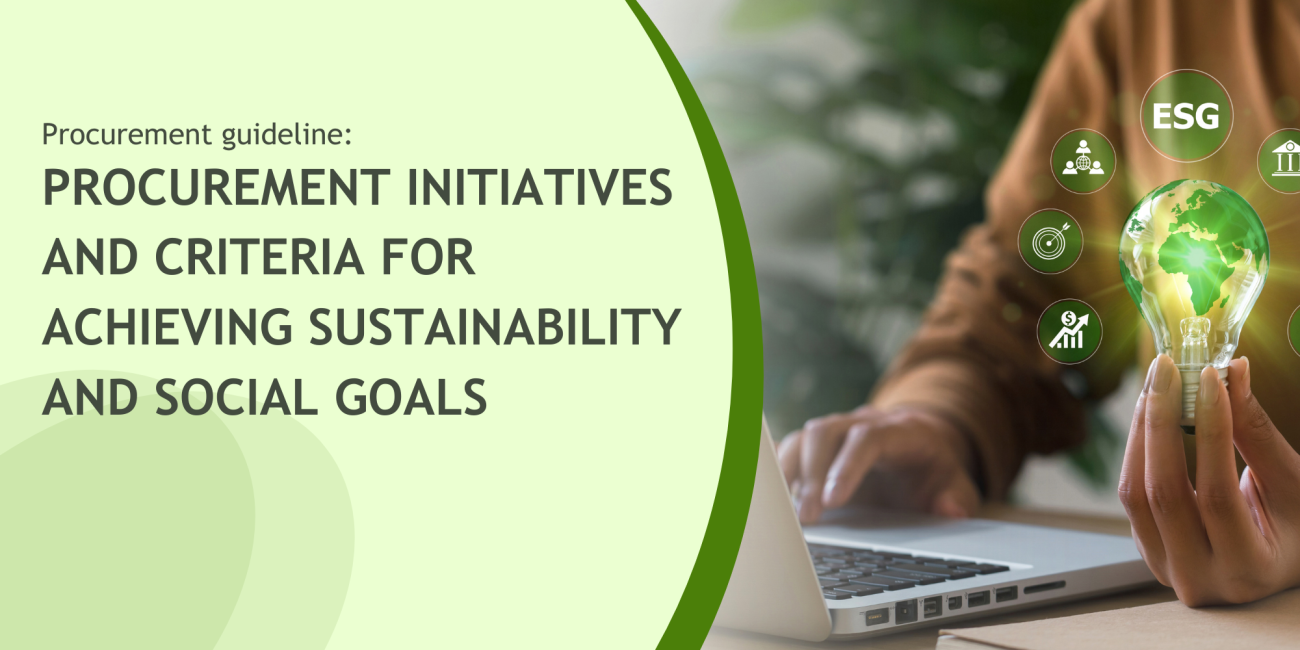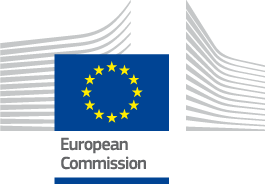Procurement initiatives and criteria for achieving sustainability and social goals
h2, h3, h4 {
color: #008bd2;
}
| READ IN FRENCH | READ IN GERMAN |

1. The use of public procurement for sustainable objectives
Cities can decide to use their procurement processes to pursue not only short-term needs, but also long-term commitments that reflect broader goals linked to resource efficiency, climate change, social responsibility and economic resilience embedded in the organisation’s strategy.
Public authorities implementing sustainable procurement can report a range of benefitsProcura+ Manual: https://procuraplus.org/fileadmin/user_upload/ManualProcura_online_version_new_logo.pdf, including:
- Meeting environmental and sustainability policy goals. Procurement of high-budget infrastructure or goods has a particularly high carbon footprint.
- Financial efficiency. While it may seem that sustainable purchase options cost more, incorporating sustainability in the overall procurement strategy of the organisation can help to redefine procurement needs and thus reduce the overall costs - for example by reducing demand, implementing more efficient systems or sharing resources with other organisations.
- Reputation. Both citizens and international organisations are increasingly aware of sustainability issues and expect public authorities to lead the way in adapting their consumption accordingly. Adopting sustainable procurement can also bring political benefits by demonstrating environmental, social and economic advantages.
- Compliance with international standards. Implementation of sustainable procurement practices can help ensure compliance with sustainable goals fixed by the United Nations. This approach not only supports compliance with international sustainability standards but also strengthens the organisation's commitment to long-term, ethical, and sustainable development.
- Market transformation and innovation. Incorporating a sustainable procurement policy can also help stimulate the market to develop innovative and sustainable solutions shaped to the public organisation’s needs.
1.1 Opportunities under the 2014 Procurement Directives
The 2014 Procurement Directives (2014/23/EU, 2014/24/EU and 2014/25/EU) open up several opportunities to implement sustainable procurement while maintaining the basic requirements of competition, transparency and equal treatment.
These opportunities include environmental and social considerations that can be considered when awarding and performing public contracts:
- Environmental sustainability:
- Contracting authorities could incorporate Green Public Procurement (GPP) criteria into a public procurement procedure for goods, services, or works to reduce the environmental impact of a purchase. The GPP criteria and requirements cover different objects of procurement and are freely consultable to this link. As an example, a tool that can be introduced for LDT solutions is the ISO 14062 on ecodesignecodesign.
- Fair trade certified products: Another way to promote sustainability along the fair supply chain is to encourage the use of fair-trade certified products, which guarantee ethical sourcing practices, and environmentally friendly production methods.
- Social sustainability: the social responsibility in procurement process can be implemented in different ways:
- Use of reserved contracts: art 20 of Directive 2014/24/EU.
- Even when contracts are not reserved, contracting authorities can choose to incorporate award criteria or technical specifications that enhance the contract’s social impact (inclusion disadvantaged groups, SROI instruments, adherence to universal design principles, complying with the ILO core conventions among others; fair wage, requiring specific certifications such as SA8000).
- When it comes to social responsibility for digital projects, public procurers should be aware of Electronics Watch and its potential as a tool in public procurement to ensure international labour rights and safety standards.
- Life cycle costing approach: by embedding in tender documents the Life cycle costing approach as established in art. 68 of Directive 2014/24/EU, the administration can consider in advance all the costs that will be incurred during the lifetime of the product, with a result that they will have a greener product, work or service which is also cheaper overall. Tools such as the ISO 14040_2006 standard of lifecycle assessment of digital services and equipment can be used.
2. Integrating sustainability and social objectives in public procurement
The public procurement of Local Digital Twins (LDT) solutions offers a significant opportunity to drive sustainability and innovation. Digital twins, virtual replicas of physical assets or systemshttps://joinup.ec.europa.eu/collection/elise-european-location-interoperability-solutions-e-government/glossary/term/digital-twin, can enhance city planning, energy efficiency, and infrastructure management. By incorporating sustainability criteria throughout the procurement process, contracting authorities can ensure that these solutions are environmentally and socially responsible, while fostering innovation in urban management.
Below is an overview of how environmental and social sustainability can be integrated at key stages of the public procurement process for LDT solutions:
2.1 Selection of the procedure
The procedure chosen is key to ensure fostering sustainability and innovative processes:
- Open or restricted procedures. If the solution is well-defined and already available in the market, open or restricted procedures can still incorporate sustainability by specifying environmental and social criteria. See more on that below.
- Competitive dialogue or innovation partnerships. If a public authority aims to purchase a solution that is not yet widely available on the market, the use of flexible procedures like competitive dialogue or innovation partnerships can be an option. These innovation procurement procedures encourage supplier collaboration and the creation of tailored innovative LDT solutions. To know more, refer to Guideline on Innovation Procurement.
2.2 Subject matter of the contract
The subject matter of the contract sets the foundation for sustainable outcomes. This can be defined to explicitly include sustainable outcomes, such as:
- energy-efficient data centres and cloud infrastructure,
- low-carbon infrastructure,
- circular economy principles in hardware use,
- digital twin solutions for sustainable urban planning,
- smart waste management systems
- extended life of the product/service
2.3 Selection / exclusion of bidders
The selection stage of the tender can be important to signal the use of sustainable procurement and to evaluate the previous experience and technical capacity from suppliers. In this stage, cities can include:
- Exclusion criteria. Exclude companies from tendering for not meeting certain requirements. For example, companies convicted of breaching environmental, social and labour EU and national law can be excluded.
- Selection criteria. Select the most suitable companies to bid based on technical ability and previous experience in relation to the subject matter of the contract. For example, requirements for bidders to demonstrate their capacity to carry out the contract in a sustainable manner. The Eco-Management and Audit Scheme (EMAS) is a tool that can be used for this objective, as well as the ISO 14001.
More possibilities can be found in the European Commissions' Buying Green! Handbook, as well as in the International Telecommunication Union (ITU) Greet ICT Standards.
2.4 Technical specifications
Technical specifications form a critical part of the tender documentation and establish mandatory requirements for providers. In this stage, green and ethical requirements can be specified, such as the use of energy-efficient hardware, renewable energy sources, low-carbon infrastructure or eco-friendly software development processes. Depending on the subject of the contract, as specified in the previous paragraph n.1.1 , there may be GPP requirements and criteria set by the European Commission, which can be included as technical specifications. Also from a social perspective, it's also possible to consider social aspects by technical specifications such as: the inclusion of accessibility and design for all, requiring apprentices or trainees for creating new job opportunities.
An important aspect that can be required at this stage is the interoperability of the solution with other city systems as well as the scalability, allowing for future sustainability improvements. More information on Minimal Interoperability Mechanisms can be found on Guideline on Compliance with MIMs, standards, specifications and certifications.
2.5. Award criteria
The MEAT approach allows contracting authorities to evaluate tenders based on a broader set of award criteria, including quality, environmental and social impacts, and life-cycle costs, rather than just focusing on the lowest price. This may encourage suppliers to offer more sustainable solutions that deliver long-term value, such as reduced environmental impacts, ethical labour practices, and enhanced product durability, promoting both cost-efficiency and sustainability goals over time.
Under the Most Economically Advantageous Tender (MEAT) scope, contracting authorities can reward sustainability and innovation efforts on the solution offered.
As for the technical specifications, there are also precise award criteria for some specific procurement objects that can be inserted directly in the tender documents. Even the use of specific certifications regarding the environmental quality of the company such as the renowned ISO 14001 or energy certifications can be requested as a technical score in the award criteria.
There are some countries that count on tools like the CO2 Performance Ladder, a procurement tool that stimulates the reduction of carbon footprint from the supply chain. These tools can be indicated as award criteria as well as technical specifications.
For example, the use of life-cycle costing can be rewarded in order to evaluate the total cost of ownership of an LDT object of procurement, such as energy costs, maintenance and end-of-life disposal costs.
Award points can also be allocated to solutions that foster environmental and social benefits (e.g. creation of local green jobs) or to innovative approaches that go beyond the technical specifications. For example, solutions that exceed minimum interoperability standards can be rewarded with additional points.
2.6 Contract performance clauses and management
Throughout contract performance clauses the consideration of sustainable aspects should continue, for example, through sustainability performance reports or the continuous improvement from the supplier side. These clauses serve as guarantees, making contractors accountable for their social responsibilities, as non-compliance may lead to penalties or disqualification from the tendering process.
3. Other considerations
Contracting authorities can also consider other aspects such as the collaboration with local stakeholders (like local communities and environmental organisations), which can ensure that the LDT solution addresses the sustainability concerns as expected. This can take place while conducting community engagement workshops or establishing partnerships with local environmental NGOs.
Alignment with external stakeholders and organisations can also be taken into account, to ensure that the cities’ procurement decisions are in track with governmental or regional sustainability strategies (e.g. carbon neutrality targets, green urban mobility plans, etc). This can be achieved through the alignment with broader regional development programs or the establishment of partnerships with governmental agencies on data collection and reporting for environmental impact.
4. Encouraging the participation of MSMEs and startups
For everything about the tender strategy aimed at recruiting small and medium-sized enterprises and including startups in public procurement, please refer to Guideline on Information on how to encourage participation of SMEs.
5. Sustainable procurement initiatives
Additional resources on sustainable and social procurement can be found in the following websites:
- The Procura+ Network and its Procura+ Manual.
- International Telecommunication Union (ITU)’ Green ICT Standards.
- The Resource Centre of the Sustainable Procurement Platform.
- The Green Public Procurement Helpdesk from the European Commission, managed by ICLEI. See the recommended EU GPP Criteria for Computers, monitors, tablets and smartphones (2021) and for Data centres, server rooms and cloud services (2020).
- Big Buyers Working Together for greater impact.
- The Buying Green! Handbook from the European Commission.
Additional resources on market engagement:
- Filter by “market engagement” in the Resource Centre of the Sustainable Procurement Platform.
- SPP Regions report on market engagement – providing detailed practical advice on how to engage the market.
- INNOCAT market engagement best practice report – with detailed case studies describing the process of implementation.
